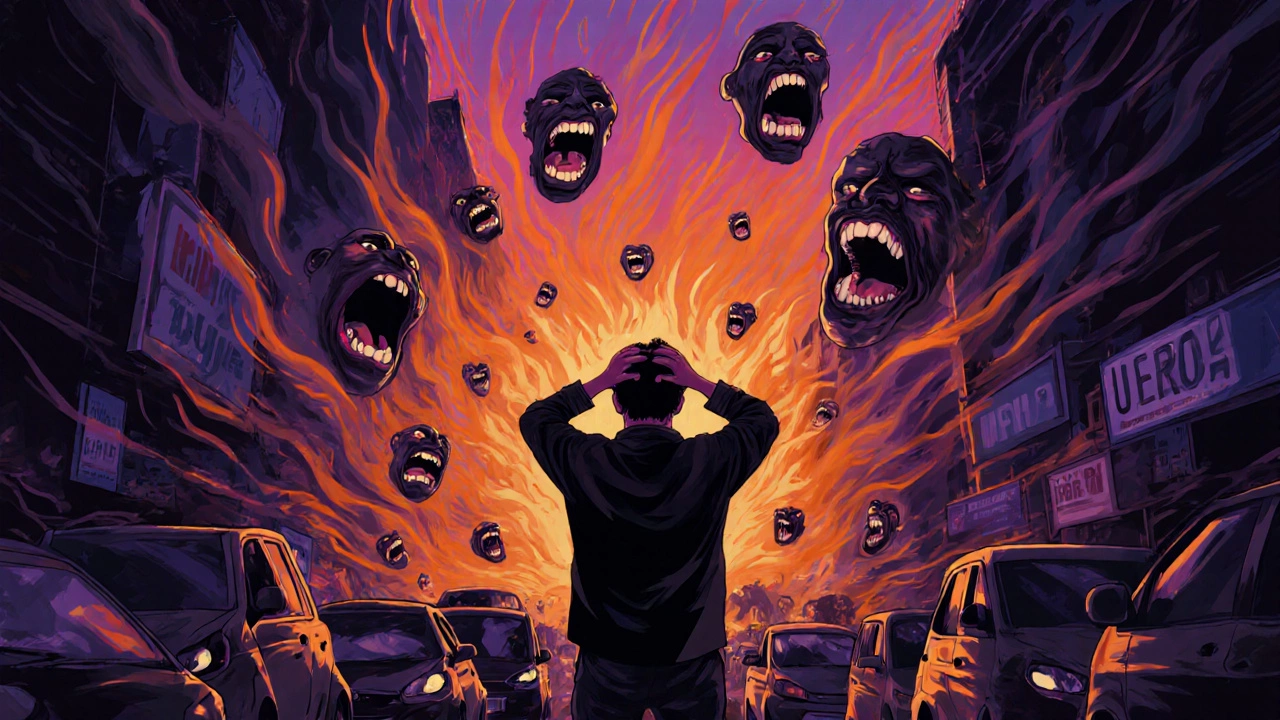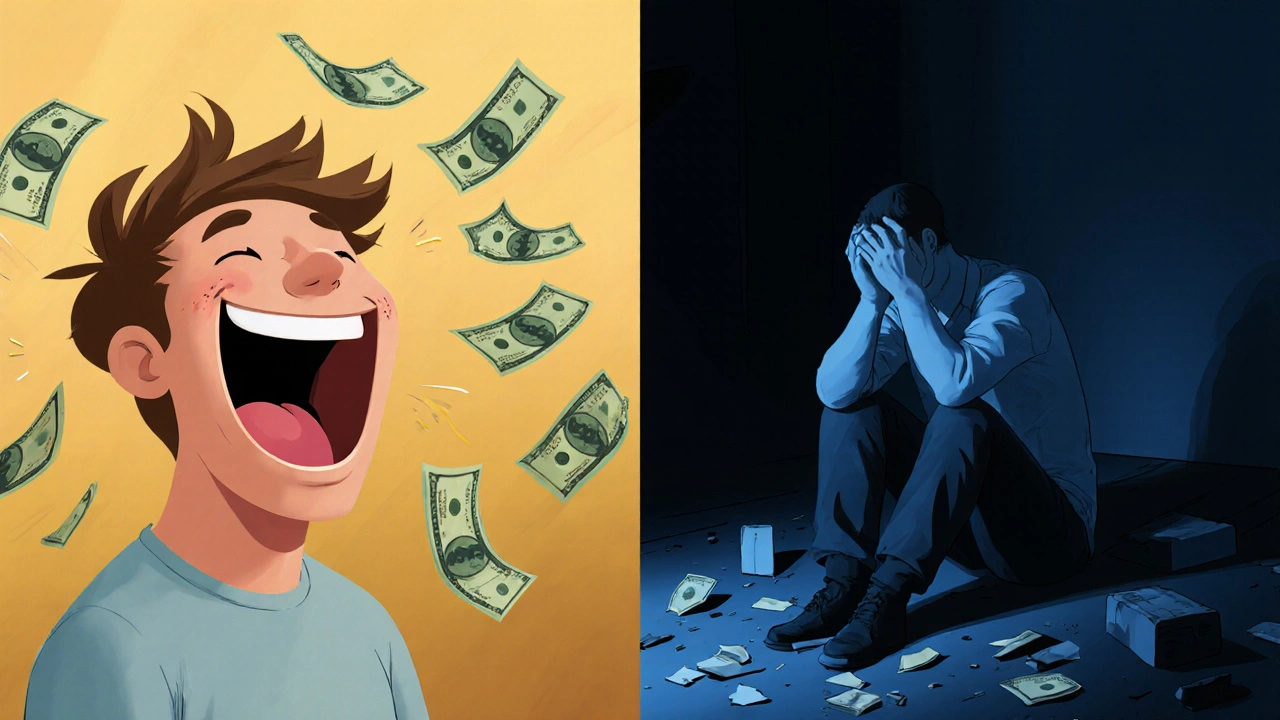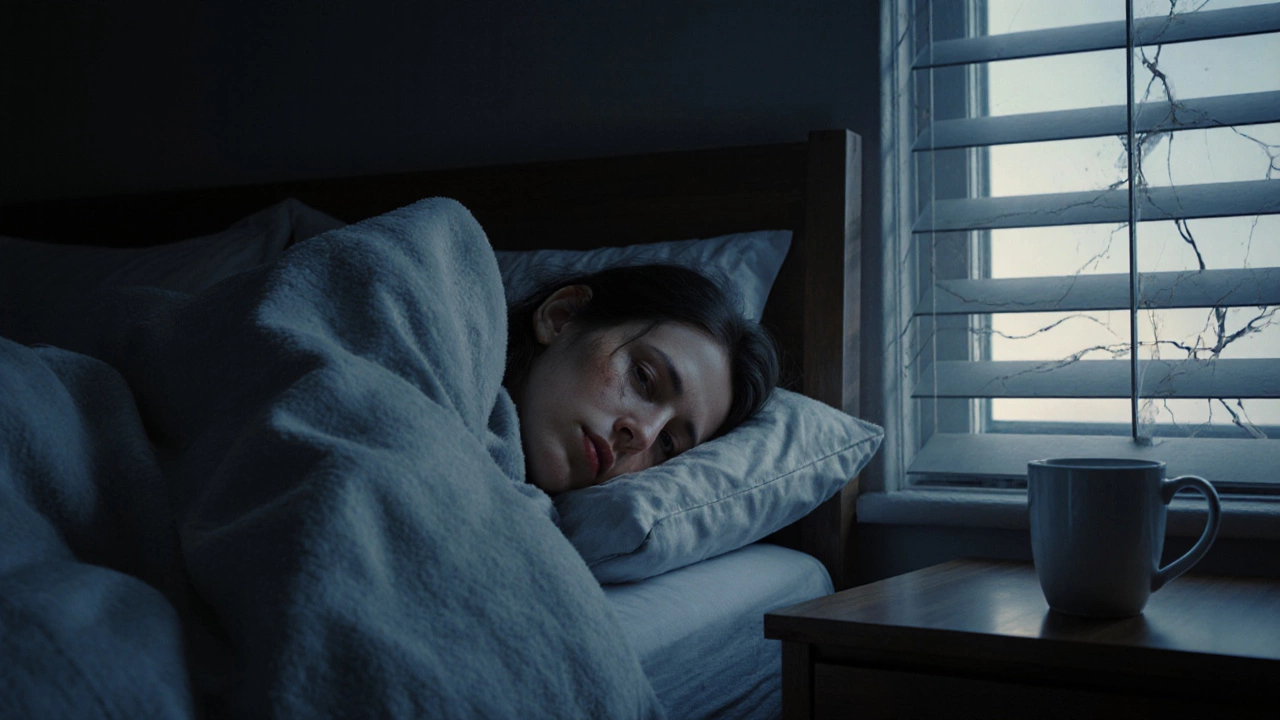When someone says they’re struggling with their mental health, it’s easy to assume they mean they’re just stressed or sad. But mental disorders are not the same as everyday mood swings. They’re real, measurable conditions that change how a person thinks, feels, and behaves-often for months or years. And they’re more common than most people realize. In India alone, nearly 1 in 7 people live with a mental health condition, according to the National Mental Health Survey of 2016. The good news? These conditions aren’t random or mysterious. They fall into clear, well-studied categories.
Depression
Depression isn’t just feeling down. It’s a persistent low mood that lasts for weeks or longer, making daily life feel impossible. People with depression often lose interest in things they used to enjoy-hanging out with friends, eating, even getting out of bed. They may feel worthless, guilty, or hopeless. Sleep changes, appetite shifts, and constant fatigue are common. In severe cases, thoughts of death or suicide appear. It’s not something you can just "snap out of." Depression affects brain chemistry, and treatment usually involves therapy, lifestyle changes, and sometimes medication. It’s one of the most treatable mental disorders, but it’s also one of the most underdiagnosed, especially in places where talking about emotions is seen as weakness.
Anxiety Disorders
Anxiety isn’t just being nervous before a presentation. When it becomes an anxiety disorder, it’s constant, overwhelming, and often irrational. There are several types: generalized anxiety disorder (GAD), panic disorder, social anxiety, and specific phobias. Someone with GAD might worry nonstop about work, health, or family-even when there’s no real threat. A person with panic disorder might suddenly feel like they’re having a heart attack, with chest pain, dizziness, and shortness of breath. Social anxiety isn’t shyness-it’s terror of being judged in everyday situations like eating in public or speaking up in meetings. These aren’t choices. The brain’s fear response is stuck on high alert. Cognitive behavioral therapy (CBT) has proven highly effective, helping people rewire how they respond to triggers.
Bipolar Disorder
Bipolar disorder used to be called manic depression, and that name still fits. It’s not just mood swings-it’s extreme shifts between two opposite states: mania (or hypomania) and depression. During a manic phase, someone might sleep only a few hours, spend money recklessly, talk nonstop, feel invincible, or take dangerous risks. Then, they crash into deep depression. These episodes aren’t controlled by willpower. They’re driven by brain chemistry and often run in families. Many people go years undiagnosed because the manic phases feel good at first. But the crashes are devastating. Mood stabilizers like lithium and therapy are the standard treatments. Without treatment, bipolar disorder can lead to job loss, broken relationships, and hospitalizations.

Schizophrenia
Schizophrenia is one of the most misunderstood mental disorders. It’s not multiple personality disorder. It’s a condition where a person loses touch with reality. They may hear voices that aren’t there, believe things that aren’t true (delusions), or have trouble organizing thoughts or speech. Some withdraw from social life. Others become agitated or aggressive. It usually starts in late teens or early adulthood. The exact cause isn’t known, but genetics, brain structure, and environmental triggers like stress or drug use play a role. Antipsychotic medications are the main treatment, but therapy and social support are just as important. With proper care, many people with schizophrenia can live full, independent lives. The stigma around it, though, still keeps many from seeking help.
Obsessive-Compulsive Disorder (OCD)
OCD isn’t about being neat or organized. It’s about being trapped in a cycle of intrusive thoughts (obsessions) and repetitive behaviors (compulsions) meant to reduce the anxiety those thoughts cause. Someone might wash their hands until they bleed because they’re terrified of germs. Another might check the stove 20 times before leaving the house, even though they know it’s off. These rituals take hours a day and cause real distress. People with OCD often hide their symptoms because they feel ashamed. But it’s not a personality quirk-it’s a brain wiring issue. Exposure and Response Prevention (ERP), a form of CBT, is the gold standard treatment. Medications like SSRIs can also help. The key is recognizing that the compulsions aren’t helpful-they’re the problem.
Post-Traumatic Stress Disorder (PTSD)
PTSD doesn’t only happen to soldiers. It can follow any deeply traumatic event: a car crash, assault, natural disaster, or even witnessing violence. People with PTSD relive the trauma through flashbacks or nightmares. They avoid anything that reminds them of the event-places, people, conversations. They become hyperalert, easily startled, or emotionally numb. Sleep is broken. Concentration fades. It’s not about being "strong" or moving on. The brain’s alarm system stays stuck in danger mode. Trauma-focused therapy, like EMDR or cognitive processing therapy, helps reprocess the memory. Medication can ease symptoms, but healing comes from safely facing the trauma, not avoiding it. In India, where trauma is often silenced, PTSD is massively underdiagnosed, especially after events like floods, riots, or domestic violence.

Attention-Deficit/Hyperactivity Disorder (ADHD)
ADHD isn’t just being distracted or hyperactive. It’s a neurodevelopmental disorder that affects focus, impulse control, and time management. In children, it might look like constant fidgeting or trouble sitting still. In adults, it’s often about chronic disorganization, missed deadlines, forgetfulness, and emotional overwhelm. Many adults with ADHD were never diagnosed as kids because they weren’t the "troublemaker" type-they were the daydreamer. It’s not laziness. Brain scans show differences in areas responsible for attention and self-regulation. Stimulant medications like methylphenidate can help, but so can behavioral strategies: structured routines, timers, task breakdowns. Therapy helps people build coping skills and reduce shame. ADHD is often mistaken for poor discipline, but it’s a biological condition that responds to the right support.
Why Recognition Matters
Knowing the difference between these seven types isn’t just academic. It’s life-changing. Mislabeling depression as laziness, or OCD as perfectionism, delays treatment. It makes people feel broken instead of ill. Mental disorders don’t care about your background, income, or education level. They affect students, factory workers, teachers, and CEOs alike. The biggest barrier isn’t lack of treatment-it’s lack of understanding. In India, where mental health care is still stigmatized, recognizing these patterns can be the first step toward getting help-for yourself or someone you love.
What to Do Next
If you recognize any of these symptoms in yourself or someone close, don’t wait for it to get worse. Start by talking to a doctor or a licensed mental health professional. You don’t need a formal diagnosis to begin support-therapy, support groups, and lifestyle changes can help even before a diagnosis. Online resources like the National Institute of Mental Health (NIMH) or India’s Mental Health Helpline (call 1800-599-0019) offer free guidance. Medication isn’t always needed, but it’s an option worth exploring with a psychiatrist. Recovery isn’t about becoming "normal." It’s about finding ways to live well, despite the condition.
Can mental disorders go away on their own?
Sometimes symptoms improve with time, especially if stressors are removed. But most mental disorders don’t truly go away without treatment. Left untreated, they often get worse or lead to other problems like substance abuse, relationship breakdowns, or physical health issues. Early intervention leads to better long-term outcomes.
Are mental disorders genetic?
Genetics play a role in many mental disorders-especially depression, bipolar disorder, schizophrenia, and ADHD. Having a close relative with one of these conditions increases your risk, but it doesn’t guarantee you’ll develop it. Environment, trauma, lifestyle, and brain chemistry all interact with genes. It’s not destiny-it’s risk.
Can children have mental disorders?
Yes. Children can experience depression, anxiety, ADHD, OCD, and even early signs of bipolar disorder or PTSD. Symptoms often look different than in adults-irritability instead of sadness, tantrums instead of withdrawal. Early diagnosis and therapy can prevent long-term struggles. School counselors and pediatricians can help connect families with child mental health specialists.
Is therapy better than medication?
It depends on the disorder and the person. For mild to moderate depression or anxiety, therapy alone can be just as effective as medication. For severe cases-like psychosis, bipolar disorder, or treatment-resistant depression-medication is often essential. Many people benefit most from a combination of both. Therapy teaches skills; medication balances brain chemistry. They work together.
How do I know if I need professional help?
If symptoms last more than two weeks, interfere with work, relationships, or self-care, or if you’re having thoughts of harming yourself, it’s time to reach out. You don’t need to be "in crisis" to seek help. Talking to a therapist is like seeing a doctor for a persistent headache-it’s preventative care for your mind.

 Calorie Needs for a 55‑Year‑Old Woman to Lose Weight
Calorie Needs for a 55‑Year‑Old Woman to Lose Weight
 Understanding Bone Surgery: Procedures and Healing in Orthopedics
Understanding Bone Surgery: Procedures and Healing in Orthopedics
 Top Hospitals for Orthopedic Surgeries You Should Know About
Top Hospitals for Orthopedic Surgeries You Should Know About
 Can an Orthopedic Doctor Fix a Pinched Nerve?
Can an Orthopedic Doctor Fix a Pinched Nerve?
 Using US Health Insurance Abroad: What You Need to Know
Using US Health Insurance Abroad: What You Need to Know